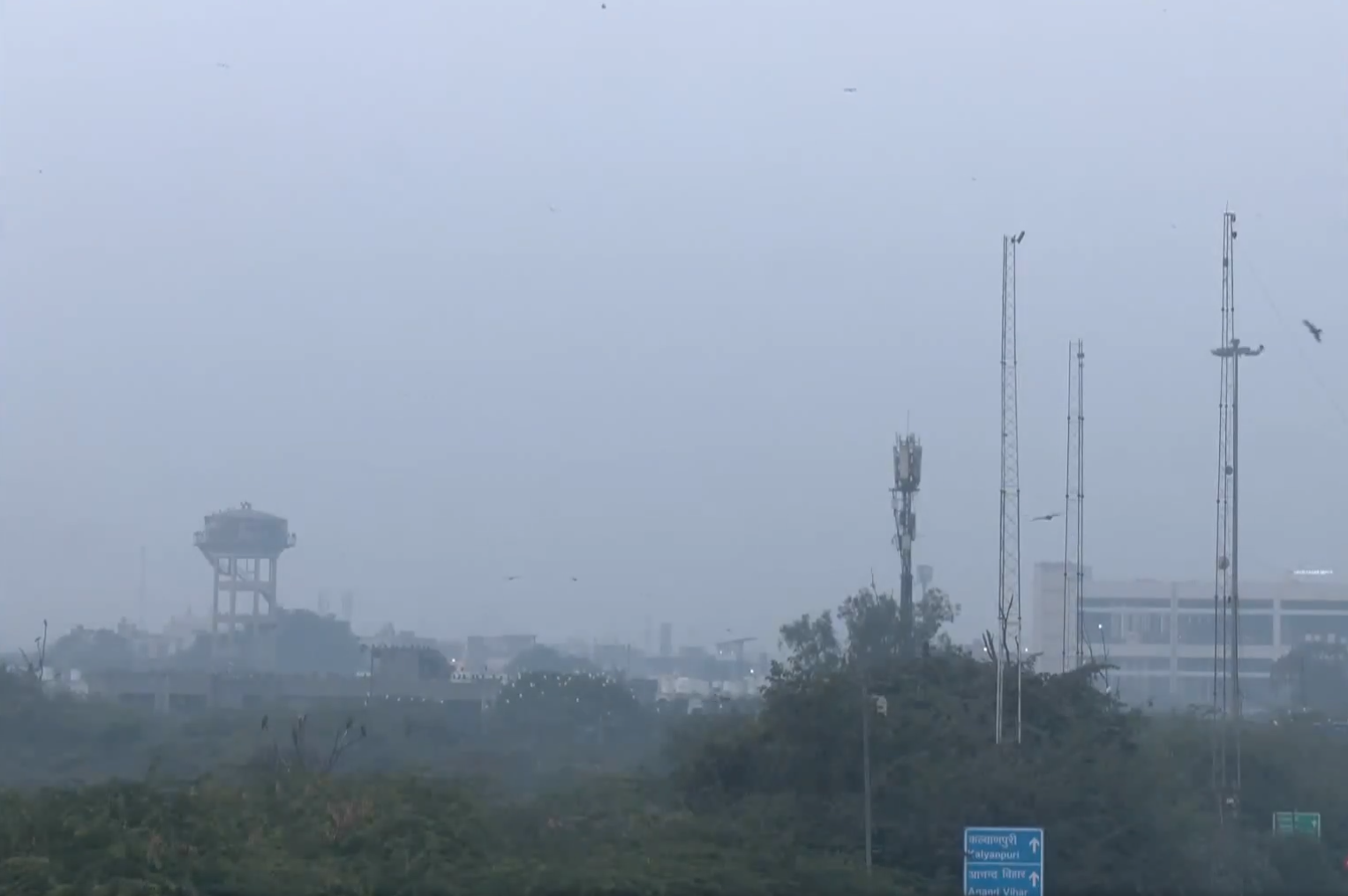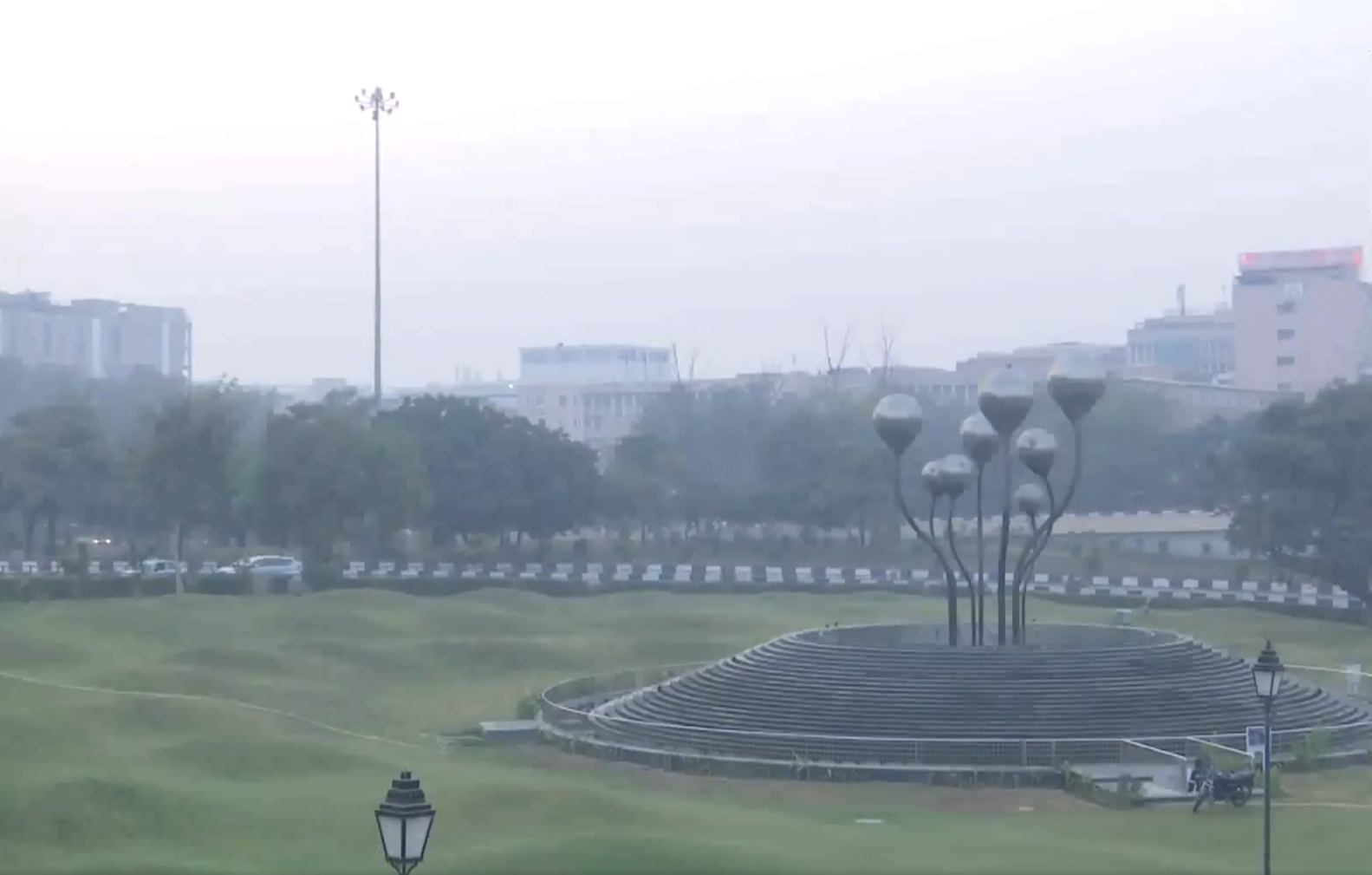New Delhi [India], November 26 (ANI): A layer of haze engulfed the national capital on Wednesday morning as the average Air Quality Index (AQI) stood at 337 at 7 am, falling under the ‘very poor’ category despite the Graded Response Action Plan (GRAP)-III in effect across Delhi and the National Capital Region (NCR), according to the Central Pollution Control Board (CPCB).
AQI around the India Gate was recorded at 358, while AQI near the Ghazipur area stood at 363. 
AQI around the All India Institute of Medical Sciences (AIIMS) stood at 348. Visuals near the South Extension showed a layer of toxic smog blanketing the area. AQI around the area was recorded at 348 at 7 am. 
Bawana recorded the AQI level of 377 at 7 am, falling under the ‘very poor’ category. In contrast, NSIT Dwarka recorded an AQI of 296, according to data from the Central Pollution Control Board (CPCB).
Meanwhile, with the ash clouds from Ethiopia’s Hayli Gubbi Volcano reaching India, environmentalist Vimlendu Jha said that the ash clouds will not “immediately impact” Delhi’s AQI.
He said, “The eruption of Ethopia’s volcano is enormous, and if you see it in the last 24 hours, whether we talk about Gujarat, Rajasthan or even in the last 12 hours, we can even see the ashes floating around Delhi. The overall impact of the eruption will be in the form of ash clouds and will not immediately affect the AQI in Delhi. The clouds are made of sulphur dioxide (SO2) and glass particles. Though it will not immediately affect the AQI, we need to monitor it, as the clouds are in the very upper atmosphere.
“The impact of these clouds might be seen in the Himalayas, the Tarai region (a lowland region of flat, alluvial soil that forms a belt along the Nepal-India border) and even parts of China.”, he said.
On Delhi air pollution, he said, ” In Delhi, more than half of the air quality monitoring stations are showing a rating of 400 plus of AQI, which is of the ‘severe’ category and in some areas, the AQI is even reaching 450 plus, which is basically ‘hazardous’, and this is if we take into account government monitoring stations. But if I factor in the private monitoring stations, the situation is worse, with my own device showing an AQI of 397 in my home.”
According to AQI categorisation, 0-50 is ‘good’, 51-100 ‘satisfactory’, 101-200 ‘moderate’, 201-300 ‘poor’, 301-400 ‘very poor’, and 401-500 ‘severe’. (ANI)
Disclaimer: This story is auto-generated from a syndicated feed of ANI; only the image & headline may have been reworked by News Services Division of World News Network Inc Ltd and Palghar News and Pune News and World News
HINDI, MARATHI, GUJARATI, TAMIL, TELUGU, BENGALI, KANNADA, ORIYA, PUNJABI, URDU, MALAYALAM
For more details and packages











